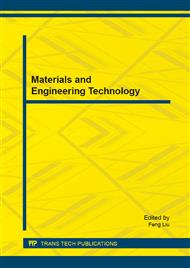p.1013
p.1019
p.1023
p.1030
p.1038
p.1043
p.1049
p.1056
p.1063
Acceleration Signal Processing Based on EMD Adaptive Filtering and Frequency Domain Integration
Abstract:
In order to improve the accuracy of the phase and amplitude of acceleration integration results, a new method to transform acceleration signal into displacement was presented which combines Empirical Modal Decomposition (EMD) adaptive filtering with FFT based frequency domain integration. The acceleration signal is decomposed by EMD into n IMF, and by certain rules, the number of IMF pertaining high frequency (h) is determined, and the h IMF are adaptively filtered to cancel noises. After that, the FFT transform is applied to the n processed IMF, frequency domain integration is done, and finally the displacements time series is obtained by IFFT. Simulation shows that this acceleration signal processing method is better than the pure frequency domain integration transformation.
Info:
Periodical:
Pages:
1038-1042
Citation:
Online since:
January 2015
Authors:
Price:
Сopyright:
© 2015 Trans Tech Publications Ltd. All Rights Reserved
Share:
Citation:


